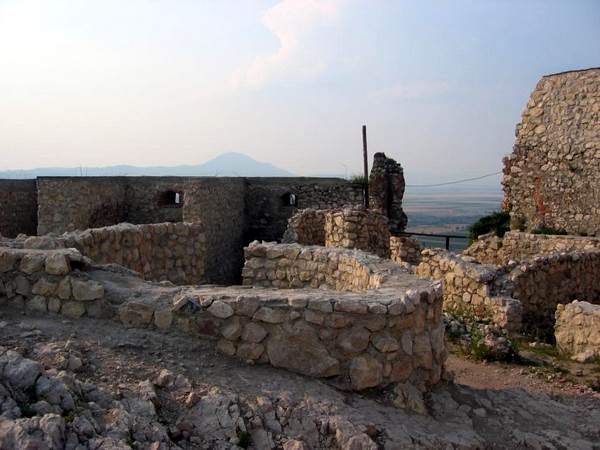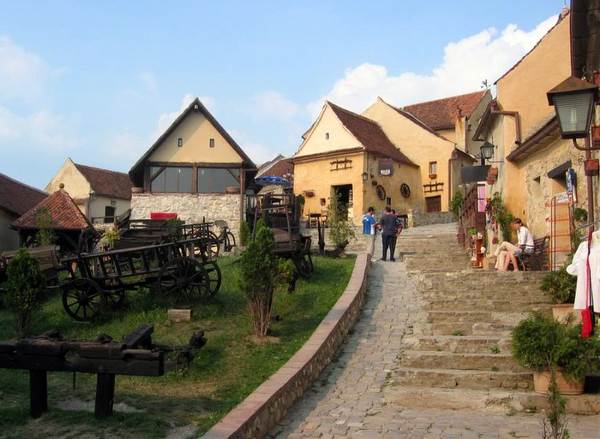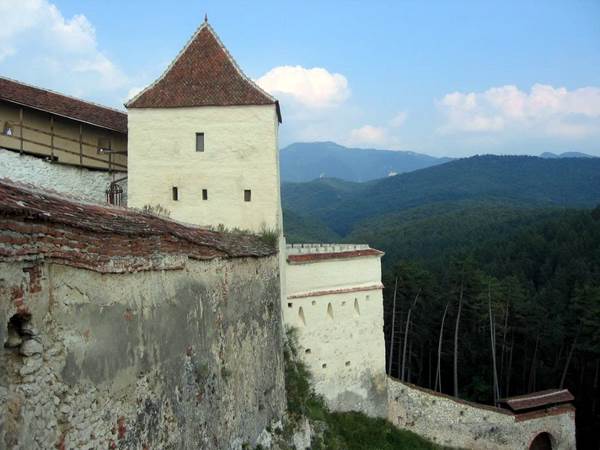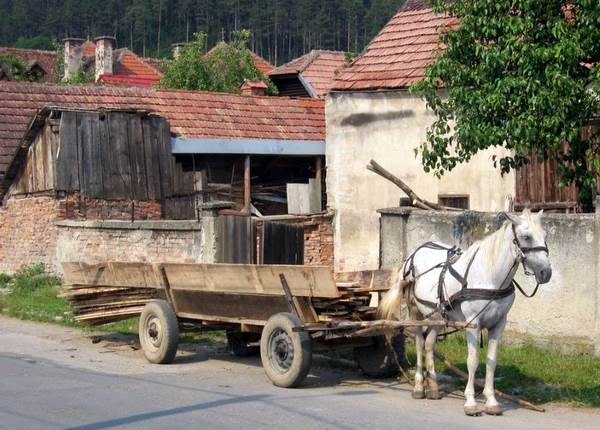Rasnov (pronounced Ryshnov) is a small town in Transylvania, central-western Romania, that is home to a spectacular fortified complex. While major Transylvanian cities such as Brasov and Sibiu are famous for their medieval city walls,  the Rasnov fortification is older than theirs, its construction having commenced in 1241. It is called the “peasant citadel” as it was constructed by the town’s agricultural workers.
the Rasnov fortification is older than theirs, its construction having commenced in 1241. It is called the “peasant citadel” as it was constructed by the town’s agricultural workers.
Sitting atop a crag 150 meters high, the fortification several times served as a refuge for Rasnov inhabitants. The area, strategically located on the road linking Transylvania to the neighboring principality of Wallachia, often came under attack from Tatars or Turks. Whenever that happened, townsfolk would retreat up the hill from the town itself to shelter within the fortress walls. The town of Rasnov, which now has 16,000 residents, is spread out at the hill’s foot. It largely consists today of sleepy lines of Baroque houses from the 18th century.
 To climb up to the citadel, start by locating the town’s main square, Piata Unirii, which is situated at a place where you directly face the Hollywood-style white letters spelling “Rasnov” on the hillside. Go to the square’s side nearest the fortress, and there is a building with a gateway that leads onto a broad courtyard. This building houses a restaurant, Pub Castel, with a nice beer garden. You might need the sustenance of the food offered here – including flavourful Romanian soups – before you start climbing the steps that lead from the courtyard up to the top of the hill. They are steep, but not dangerous.
To climb up to the citadel, start by locating the town’s main square, Piata Unirii, which is situated at a place where you directly face the Hollywood-style white letters spelling “Rasnov” on the hillside. Go to the square’s side nearest the fortress, and there is a building with a gateway that leads onto a broad courtyard. This building houses a restaurant, Pub Castel, with a nice beer garden. You might need the sustenance of the food offered here – including flavourful Romanian soups – before you start climbing the steps that lead from the courtyard up to the top of the hill. They are steep, but not dangerous.
If you’d rather drive to the fortress, you can take a winding road that starts a few hundred meters right from Piata Unirii. This doesn’t save any time, though. Either way, you need 15 minutes or so to reach the top.
The fortress is constructed directly into the cliff, and its 17th-century outer wall, five meters high, falls and rises with  the hill’s contours. It has eight bastions, the most powerful of which is the gate tower. Within this is the 14th-century inner wall.
the hill’s contours. It has eight bastions, the most powerful of which is the gate tower. Within this is the 14th-century inner wall.
Once you get to the interior of the fortress, you’ll see that it is a kind of miniature town. It has a little network of streets and some 30 houses. In the old days, these would be kept prepared for the town’s residents to retreat into. The complex is in good condition and contains facilities like a café and a museum full of medieval utensils, weapons and documents. Elsewhere in the fortress is a place where you can take archery lessons. There is also an international medieval arts festival held up here every year.
The fortification has saved the people of Rasnov more than once. For instance, during a Tatar invasion in 1335 that devastated this area, contemporary documents say that Rasnov was one of only two fortresses that resisted.
Only once did the fortress surrender, in 1612. That was a result of invaders locating the water supply – a hidden river. After that, the townsfolk decided to dig a well in the fortress, which was completed between 1623 and 1640 – probably  by Turkish prisoners. The well, which is still visible, goes down 146 meters through solid rock. It only ceased to be used in 1850, as a result of its wheel breaking.
by Turkish prisoners. The well, which is still visible, goes down 146 meters through solid rock. It only ceased to be used in 1850, as a result of its wheel breaking.
The enemy in 1612, ironically, was the leadership of Transylvania. Rasnov sided with the Wallachians – who had formed an alliance with the Austrians – against the Transylvanian leaders, who were Turkish vassals. The Transylvanian leadership won that particular conflict, and punished Rasnov by holding its citadel for a year, eventually freeing it on payment of a ransom.
Despite that defeat, Rasnov’s residents successfully sheltered in the fortress when the Turks attacked Transylvania in 1658 and in 1690. The last time the fortress served its protective purpose was a period of a few months in 1789, when Austrians and Turks once again battled for domination over the area.
In today’s more peaceful times, Rasnov’s fortress is simply a delightful place to visit. Rasnov is also fairly easy to find, as it is easily reached by road or rail from the major city of Brasov, about 15 kilometers away.


Comments